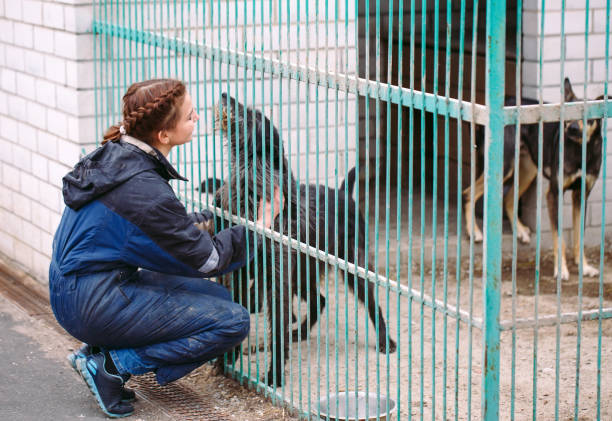Morrow, M., Ottobre, J., Ottobre, A., Neville, P., St-Pierre, N., Dreschel, N. and Pate, J.L. (2015). Breed-dependent differences in the onset of fear-related avoidance behavior in puppies. genetics
Clay, L., Paterson, M., Bennett, P., Perry, G., & Phillips, C. (2019). Early Recognition of Behaviour Problems in Shelter Dogs by Monitoring them in their Kennels after Admission to a Shelter. Animals, 9(11), 875. https://doi.org/10.3390/ani9110875
Deldalle, S. and Gaunet, F. (2014). Effects of 2 training methods on stress-related behaviors of the dog (Canis familiaris) and on the dog-owner relationship. Journal of Veterinary Behavior, 9, 58-65. DOI: 10.1016/j.jveb.2013.11.004
Environmental enrichment programs provide benefits to both captive animals and the facilities that house them, but cost time and resources to design, implement, and maintain. As yet, there have been few theoretically based guidelines to assist animal care staff in establishing cost-efficient enrichment methods that both elicit the desired behavioral changes and maintain their success over time. We describe several well-studied principles from the field of experimental analysis of behavior, including intrinsic reinforcement, extrinsic reinforcement, habituation, extinction, and schedules of reinforcement that could be very useful for evaluating the short- and long-term effectiveness of enrichment.
Pullen, A.J., Merrill, R.J.N., and Bradshaw, J.W.S. (2012). The effect of familiarity on behavior of kennel housed dogs during interactions with humans. Applied Animal Behaviour Science, 137, 66-73.
Center for Shelter Dogs. (n.d.). Problems and Management. Tufts University: Cummings School of Veterinary Medicine. Retrieved June 21, 2023, from https://centerforshelterdogs.tufts.edu/dog-behavior/problems-and-management/.





